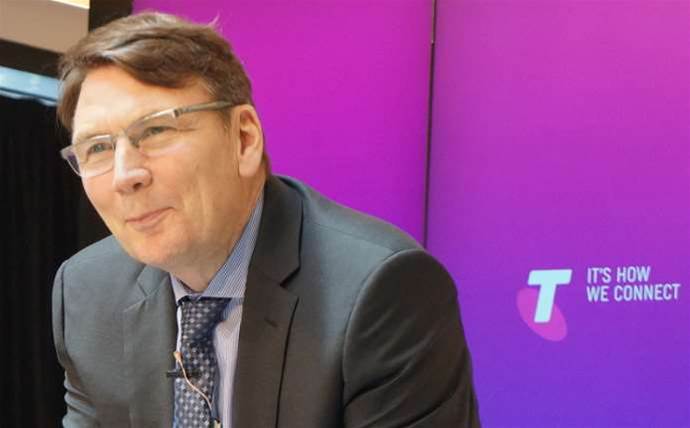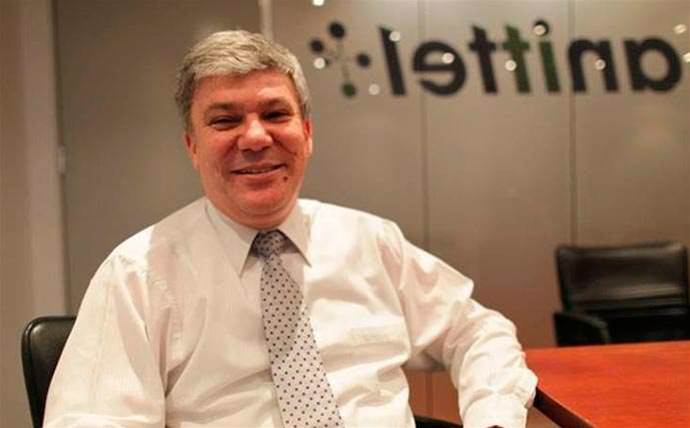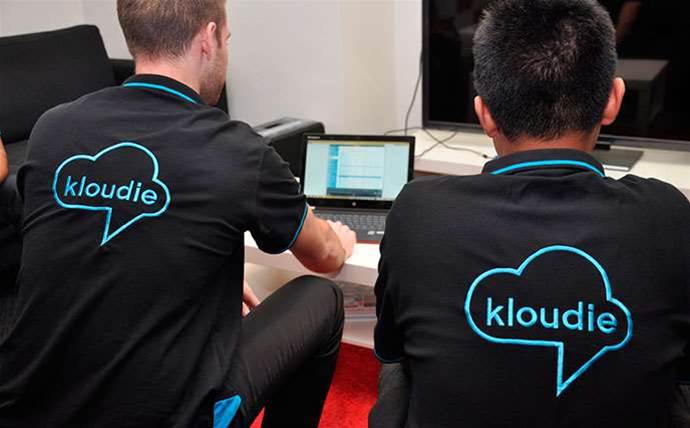The great irony of telcos buying integrators is that they are famously poor at integrating them.
Past missteps clearly haven't deterred the carriers, though, with another award-winning Microsoft partner, Readify, getting snapped up by Telstra, amid the telco's other 2016 purchases of Kloud and MSC Mobility.
Many in the Australian ICT technology would be forgiven for a palpable sense of déjà vu. Remember Kaz Group? Telstra spent $333 million to buy Kaz in April 2004, then flogged it off for $200 million five years later. (We could also stretch our memories back even further and look at Telstra's 1997 Advantra joint venture with IBM and Lend Lease, which became Telstra Enterprise Services before being mothballed and rolled back into the telco in 2002).
The Kaz transaction was widely deemed a failure, and insiders suggest the loss was even greater than the numbers indicate, after the carrier stuffed the sale to Fujitsu with pre-existing IT services contracts with blue-chip clients Qantas, Woolworths, NAB and Westpac.
It was seemingly such a misstep that David Thodey – then Telstra's enterprise and government group MD, and later its CEO – said around the time that the telco "no longer considered ownership of an IT services business to be a core part of Telstra's strategy".

How times change. By 2013, Telstra was again on the acquisition trail. Between August 2013 and October 2014, the carrier snapped up NSC Group, Bridge Point and O2 Networks. Now the telco is at it again, buying Kloud, Readify and MSC Mobility in the space of six months.
What is so different since Thodey's 2009 comments? Not the chief executive – NSC, Bridge Point and O2 Networks were purchased all under his watch.
Nor has there been a change to the fundamental differences between a carrier and an IT services business. Carriers are scale operations, that make massive capital investments in infrastructure, after which profits are driven by onboarding vast numbers of customers to their services, with as little human interaction as possible. IT service providers don't scale easily: they're based on expensive headcount; acquiring customers is costly and time-consuming.
Look at these 2009 comments from Mike Foster, the former Kaz managing director who became chief executive of Fujitsu Australia. "Telstra was always saying you've got too many people. [Telstra CEO Sol Trujillo] wanted to reduce my workforce. Sol could build another network but for me to grow I had to add more people."
Perhaps what has changed is Telstra's ability to understand and integrate these acquisitions. From the top-level numbers, Telstra's shift into IT services has been a roaring success – the Network Applications & Services unit now turns over $2.5 billion.
(Let's be distinct in talking about enterprise cloud and IT services as opposed to Telstra's multi-cloud strategy. Connecting infrastructure-as-a-service platforms such as AWS, Azure and SoftLayer is just an extension of the data business, while selling SaaS downloads from its Apps Marketplace is the same kind of high-volume proposition as shifting handsets.)
Beyond anecdotal evidence, it's hard to grade the success of any acquisition. Getting hold of granular detail once a mid-sized IT firm is sucked into the multibillion-dollar P&L of a Telstra or a Singtel is impossible.
CRN spoke to many senior executives who had been close to these deals, including owners who had sold their business to carriers. They largely spoke on condition of anonymity due to confidentiality agreements or an unwillingness to create friction with powerhouses like Telstra and Optus.
But first, a question worth asking – why do telcos want to acquire IT solution providers anyway? One technology CEO, who sold his company to Telstra, reckons carriers want to avoid the commodity trap and remain relevant to business decision makers, not just CIOs and purchasing departments. They don't want to be the plumbing or electricity. "As important as they are and as important as their network infrastructure is, they are going the way of power generation. We can't do without power but it is heavily commoditised.
"Technology became the obvious fit. It's the most disruptive industry and the biggest opportunity to leverage that core network. What drives the network? Technology drives the network. Mobility and cloud platforms are driving their services – 'so why don't we get into that and help our customers increase demand for our core services?'"
The rationale is sound. However, past executions have left a lot to be deserved, right?
Greatly exaggerated
Asked whether carriers' IT acquisitions had been the huge failures many perceive them to be, the former managing director of one well-known Sydney MSP suggested reports were greatly exaggerated. "They tend to buy the businesses for very different reasons than we think they are buying them. They could add network management to the top 10 percent of their clients and make a massive profit off that. The donor business looks like it is bad shape but they have built a much better widget."
He suggested this was the case with Optus, which acquired Alphawest in 2005. "I think they moved away from their basic business of being a system integrator and they created quite a lucrative network management business. The old business might look like a bit of a disaster."

Peter Kazacos, who sold Kaz to Telstra, says the perception the transaction was a commercial failure is wrong. "They actually made money on the subsequent sales. They sold Kaz for more money than they purchased it for. What people tend to forget is that Kaz was a number of components. There was the Kaz IT company, the mainframe business, which was separate, and the industry superannuation business. I can't go into the financial details, but if you add them all together, it was more than what they paid, so from a business transaction, it was successful. But in terms of keeping the good staff, it was unsuccessful."
For Kazacos, problems stem from the fundamental differences between telcos and IT service companies. "Integrators are services businesses with employees that deliver the services – employees are the primary resource. Whereas for telcos, the primary resource is data going through wires, which doesn't use people. One of the big metrics that an integrator looks at is low churn of staff. I don't think that is the metric in telco – the churn they look at its churn in and out of the services."
Next: Cracks start to appear
Bad decisions
While Optus' 2005 Alphawest buyout isn't perceived as quite as big a white elephant as Kaz, it's hard to find anyone who will sing its praises. Insiders have told CRN that while initially Alphawest chugged along pleasantly enough, the cracks started to show as Optus attempted to further integrate the IT provider.
There were apparent decisions to integrate Alphawest's enterprise client contact centre with the Optus helpdesk, despite vastly different customer requirements. Former Alphawest salespeople have talked of frustration when Optus data products were added to their targets, and about the pressure they faced from the telco to steer their clients away from existing network providers, even if the customer was happy with their current carrier.
Optus has again been on the acquisition trail. The company acquired award-winning Microsoft partner Ensyst in 2014 for up to $13 million.
Ensyst continues to be run separately to Optus, and retains the leadership of Nick Sone. But if history is anything to go by, change is inevitable. The parent will seek greater and greater synergies between its new purchase and its traditional business.
Telstra and Optus aren't the only telcos to stumble at buying into the cloud services sector. Look at the dismal failure of Amcom's takeover of Perth systems integrator L7 Solutions – the company was acquired in 2011 for $15 million and sold to Cirrus Networks less than five years later for a mere $500,000.

For the larger telcos, could size disparity be part of the problem? How does a successful mid-sized tech company maintain an identity after being engulfed by a 36,000-staff Telstra or 9,000-staff Optus? L7 Solutions was a small part of Amcom, and a minnow after its parent was acquired by Vocus Communications. But even before the Vocus deal, Amcom's IT services revenue was under-performing, down 35 percent in 2015.
Meanwhile, Dimension Data – which few would call a minnow – has struggled to impress its much-larger telco parent in recent times, repeatedly being singled out for poor performance by Japan's NTT.
If size disparity is the issue, what about the string of deals between mid-tier Australian telcos and system integrators? BigAir bought Oriel and Applaud, Inabox acquired Anittel, Nexon snapped up Praxa. The strategy of these deals is clear, providing what BigAir called “significant cross-selling opportunities”. Time will tell whether a meeting of equals offers a better model to merge telco and IT services.
People problems
Back in 2009, Mike Foster outlined the problem of wages when he said Telstra wanted to reduce the Kaz workforce. Top tech talent, such as cloud architects, don't come cheap. They are, as the owner of one award-winning IT provider put it, "reassuringly expensive". But without this talent, an IT services business will quickly unravel in a pile of overdue projects, sub-par delivery and unhappy clients. According to the director of another cloud integrator that sold to a carrier, the top 20 percent of earners might be responsible for 50 percent of the company's IP.
Leadership churn is a perennial concern during any M&A activity. 'The founder' has a particular aura in the tech industry, so what happens when the leader is no longer in charge? Before being sold to carriers, thse IT companies are often successful because they are led by dynamic, driven entrepreneurs. Yet these self-made CEOs will typically chafe within the corporate bureaucracy of a telco. It's rare to see them continue beyond the earn-out period, and the natives may soon get restless if the company culture was tied to their departing chief.
The latest round of takeovers has largely seen telcos keep top management in place. Nick Sone remains at Ensyst within Optus, and the same goes for Nicki Bowers at Kloud (her fellow directors, Jamie Potter and Geoff Rohrsheim, moved on to focus on their other companies, Chamonix and Cevo). Graeme Strange will continue to lead Readify. Some consider this evidence that the buyers have learned from past mistakes.
Typically leaders do eventually exit after a deal – Bridge Point's Rob Siganto left six months after selling, while O2 Networks' founder Craig Joyce left in June, more than two years after the sale. These departures are not, of course, signals of unrest. IT entrepreneurs sell their business as an exit strategy - in that sense, offloading to a carrier is always successful.
Maintaining the successful culture must be one of the trickiest challenges for acquisitive telcos. Kaz had the owner's name above the door. Kloud is known for its strong culture, with its consultants wearing their 'Kloudie' polo shirts with pride. Readify is renowned for employing many of the smartest technologists in the biz and has made multiple appearances in the Best Places to Work list. Is there a risk this culture could get suffocated?

One former senior executive from Kaz said, under condition of anonymity, that it had been death by a thousand cuts. "With Kaz, it was all beautiful – they came in and said, 'We bought you because you are responsive and different and you will continue as Kaz'. But little by little, it started to change. Little by little, you get caught up in the bureaucracy of the Telstra machine."
Carriers will need to learn from past misadventures if their latest acquisitions are to succeed, adds the former Kaz executive. "Readify is a technical company run by the technologists who see themselves as anti-establishment, and guess what – Telstra is the establishment."
For Kazacos, the first sign Kaz was losing its culture under its new owner was when Telstra cancelled the annual family BBQ. "It cost hardly anything – go to the park, cook some sausages, ice creams for the kids," he tells CRN. "One of the first things Telstra did was cancel the BBQ, so you have the kids saying to their parents, 'we hate Telstra'. Even the Christmas parties got cut back. They were valuable parts of the culture."
But perhaps those mistakes are things of the past, not only because the carriers have learned from them, but also because they have evolved as organisations. According to the MD of another integrator who sold to a telco, "There is an element of timing. When Kaz and Alphawest were on the market, that was a proper telco trying to buy an integrator. Fast-forward 10 years, these are technology firms – these telcos have taken many steps down the path and are much closer to integrators and there is a better understanding of our business. It is not all the way there, but it's a lot closer."
The sentiments are echoed by another technology MD. "With Kaz and Alphawest, you would have to say they were painful experiences but you build on that experience. Did they [Telstra] get it right with NSC and Bridge Point and O2? They, by their own admission, would say they didn't get it 100 percent right but they didn't too too badly and those companies are still providing value. They have got better and better at learning the best ways of integrating those companies."




_(11).jpg&h=142&w=230&c=1&s=1)







.jpg&w=100&c=1&s=0)
_(8).jpg&w=100&c=1&s=0)









